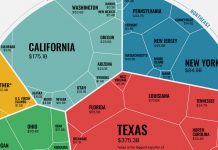It’s not the hottest thing going, yet favored stock, which commonly yields somewhere in the range of 5% and 7%, can assume a helpful part in paying financial backers’ portfolios.
However long those financial backers know precisely the exact thing they’re getting into.
Before we get everything rolling, realize that favored stock as a resource class is fairly muddled and makes a great deal of progress, so we’ll hit just a portion of its more striking qualities here.
Get the job done to say, that – likewise with any venture – it’s basic for individual financial backers to comprehend the specific terms and highlights of the favored stocks they are purchasing.
How Does Preferred Stock Work?
Favored stocks are frequently called “crossover” protections since they have both bond-and-value-like angles. Like normal stocks, preferreds address a value interest in an organization. Notwithstanding, similar to bonds, they likewise deliver normal interest or profits in view of the face – or standard – worth of the security on a month-to-month, quarterly or semi-yearly premise.
On the potential gain, favored stocks normally highlight more significant returns than normal profit stocks or bonds given by a similar firm. Their profit installments likewise take need over those connected to the organization’s normal stock profits. On the off chance that the organization faces a money crunch, normal stock profits get cut first.
Furthermore, what occurs on the off chance that the organization misses a favored profit installment? All things considered, it depends.
On the off chance that the favored stock is a combined issue, the neglected profits are viewed as falling behind financially and gather in a record. (Missing an installment on favored stock isn’t viewed as a default occasion.) Those profits should then be disseminated to favored investors before any profits can be paid to normal investors.
Be that as it may, assuming that the favored stock is non-total, the favored investor is given the shaft.
That is a significant qualification. Albeit favored investors have a position over normal investors with regards to profit installments, those profits are not really ensured.
What Are the Downsides to Owning Preferred Stock?
Favored investors likewise stand in line in front of normal investors if there should arise an occurrence of chapter 11 or liquidation. All things considered, an extensive rundown of banks and bondholders have a position over favored investors should monetary disaster strike.
Assuming normal investors are at the lower part of the liquidation pecking order for recovering in any event a portion of their capital, favored investors are nearer to the center – however not by so much.
Among the disadvantages of favored shares, not at all like normal investors, favored investors ordinarily have no democratic privileges. What’s more, albeit favored stocks offer more noteworthy cost soundness – a bond-like element – they don’t have a case on lingering benefits. That implies preferreds don’t partake in that frame of mind for cost appreciation that normal stocks do.
In that capacity, favored stock costs move in a smaller reach, and will quite often do so more on loan fee risk or the responsible organization’s credit risk.
Some would contend those are exorbitant costs to pay to get just a to some degree better return. Be that as it may, the admonitions don’t end there.
How Preferred Stocks Are Like Bonds
Favored stocks accompany developments, which will more often than not be extremely lengthy. Valid, a few favored stocks are interminable, meaning they were never experienced, yet developments of 30 years or longer are commonplace.
This carries us to this psychological study: If you were purchasing security rather than a favored stock, inquire as to whether you would be open to claiming an instrument with such a lengthy date to development for the yield you’re getting and the gamble you’re expecting.
It’s likewise essential to recall that protections with longer developments are more delicate to changes in financing costs. Similarly likewise with securities, favored stock costs fall when loan fees rise.
Simultaneously, preferreds are frequently callable. That is, the backer maintains whatever authority is needed to recover the security after a specific timeframe has passed. Similarly, as with securities, favored investors run the gamble that the guarantor will practice its call choice when loan costs are low.
No pay financial backer needs to be given back a monstrous pack of cash to contribute when loan costs are lower instead of higher.


































